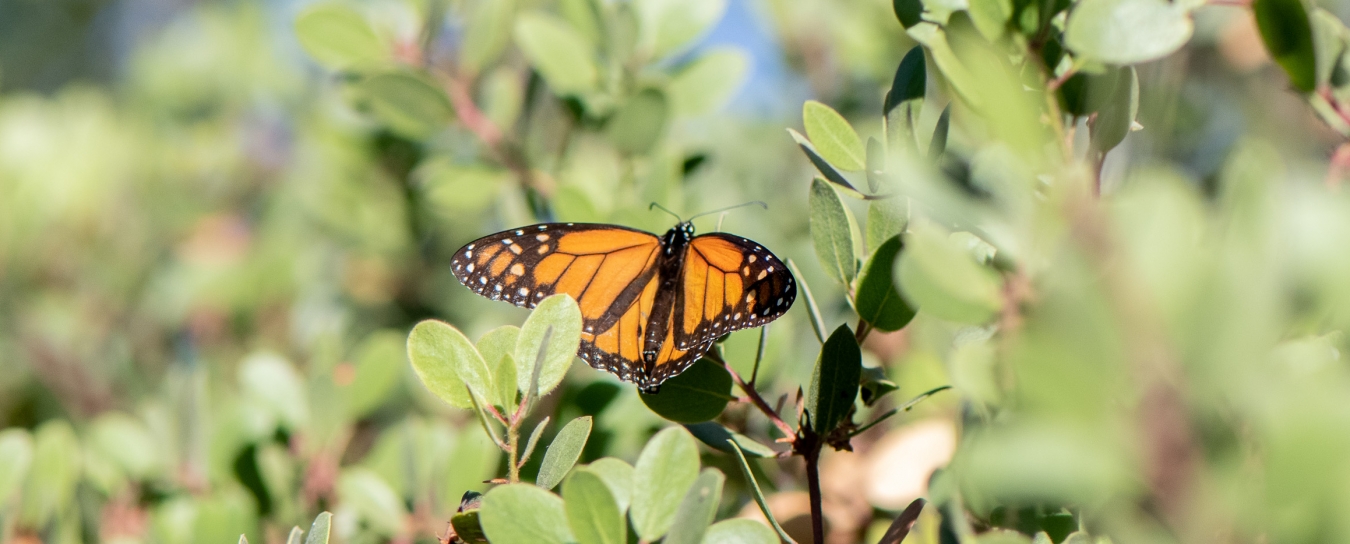
Invertebrates
See our handy guide to critters found in local homes and our Central Coast Butterfly FAQ. Browse the insects and other terrestrial arthropods we’ve identified. Check out local marine invertebrates, particularly bivalve mollusks and intertidal organisms.
- Anthropology
- Rocks & Fossils
- Invertebrates
- Vertebrates
- Botany
- Astronomy
- Fungi
- General
- Recently Asked
Tarantula and wasp timing and behavior
Hi there,
Is early July very early to be seeing tarantulas walking around? This one (ebony?) was spotted July 3 in the Carpinteria foothills at about 9:30 PM. Coincidentally, we also had two tarantula hawks hanging out in our yard the day after, on our thin leaf milkweed. They had blue black bodies with orange wings and orange antennae. Are you able to tell from the video I emailed what kind of tarantula this is?
Thanks!


Curator Response
Hi Claire,
While there are lots of different and similar-looking tarantula species in western North America, as it happens only one species, Aphonopelma iodius, is known to occur in Santa Barbara County, which makes the ID easy! It's true that these large spiders are most often noticed during the males' mass daytime prowling for the sedentary females sometime during about August–November. However, they are active at night during other times of the year as they hunt for prey.
Based on the heavy proportions of the spider in the video you emailed, my guess is that it's a female. The prominent, movable, paired spinnerets (silk-spinning structures) are nicely visible in the video sticking out of the back of the abdomen, and the spider even looks to be extruding a line of silk as she walks. Toward the end of the video, she does a few rapid kicks with her left hind leg against the back-left side of her abdomen. I think this may be hair-flicking behavior, which is a defensive strategy unique to tarantulas. Their body hairs are "urticating," meaning they have tiny barbs that can irritate skin and eyes (including those of humans); these hairs are easily dislodged by this maneuver. The hairs are light and rapidly scatter like dandelion seeds on gentle air currents, often ending up in their attacker's face.
As for the tarantula hawk wasps, we have several species in the area which do hunt our local tarantula as well as other large spiders for their brood. This appears to be Pepsis mildei (Milde's Tarantula-hawk Wasp), the only tarantula hawk wasp species in our area with this exact coloration. The orange antennae are particularly distinctive. These are actually known to be partial to milkweed nectar! Adults will take nectar from flowers to give them energy for the spider hunt and burial. The spider, after all, is for their young, not them!
Incidentally, these wasps belong to a family called Pompilidae, the spider wasps, which contains about 100 species in California. Most spider wasps are smaller than these tarantula hawks, but all members of the group hunt spiders of various types and carry (or drag) them back to their burrows or cavities for their larvae to feast on. Wolf spiders (Lycosidae), jumping spiders (Salticidae), and orb-weavers (Araneidae) are particularly favored victims.
Keep observing,
Schlinger Chair and Curator of Entomology Matthew L. Gimmel, Ph.D.


